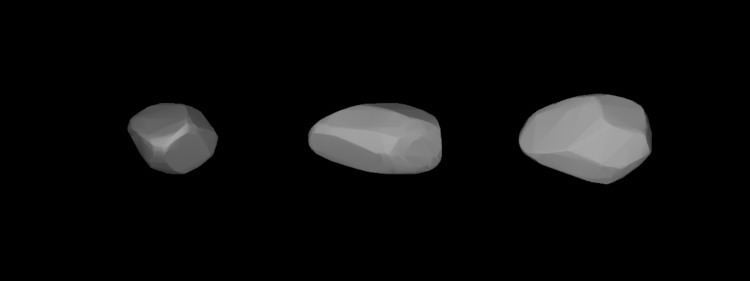Discovered by Y. Väisälä Minor planet category main-belt · (middle) Absolute magnitude 10.1 Discoverer Yrjö Väisälä Asteroid group Asteroid belt | Discovery date 28 December 1940 Discovered 28 December 1940 Orbits Sun Discovery site Iso-Heikkilä Observatory | |
 | ||
Alternative names 1940 YL · 1930 QB1937 EB · 1944 RE1951 EG · 1953 NH1957 KO · 1958 TS1 People also search for 1519 Kajaani, 1548 Palomaa | ||
1659 Punkaharju, provisional designation 1940 YL, is a stony asteroid from the middle region of the asteroid belt, approximately 30 kilometers in diameter. It was discovered on 28 December 1940, by Finnish astronomer Yrjö Väisälä at Turku Observatory in Southwest Finland.
The S-type asteroid orbits the Sun at a distance of 2.1–3.5 AU once every 4 years and 8 months (1,700 days). Its orbit has an eccentricity of 0.26 and an inclination of 16° with respect to the ecliptic. Punkaharju was first identified as 1930 QB at Uccle Observatory in 1930, extending the body's observation arc by 10 years prior to its official discovery observation.
Between 2000 and 2011, several rotational light-curves of Punkaharju were obtained from photometric observations by astronomers Brian D. Warner and Pierre Antonini. They gave a well-defined rotation period of 5.01 hours with a brightness variation between 0.26 and 0.43 magnitude (U=3/3/3). In addition, a concurring period of 5.01327 hours was published in 2016, using the Uppsala Asteroid Photometric Catalogue as the main-data source. French CCD-specialist Cyril Cavadore also derived a less secure period of 5.028 hours from his observations in October 2005 (U=2-).
According to the surveys carried out by the Infrared Astronomical Satellite IRAS, the Japanese Akari satellite, and NASA's Wide-field Infrared Survey Explorer with its subsequent NEOWISE mission, the asteroid measures between 28.01 and 31.21 kilometers in diameter, and its surface has an albedo between 0.165 and 0.271. The Collaborative Asteroid Lightcurve Link derives an albedo of 0.196 and a diameter of 31.41 kilometers using an absolute magnitude of 9.9.
This minor planet is named for the former municipality of Punkaharju, an isthmus region in southeastern Finland (also see Karelian Isthmus). Naming citation was published before November 1977 (M.P.C. 3933).
